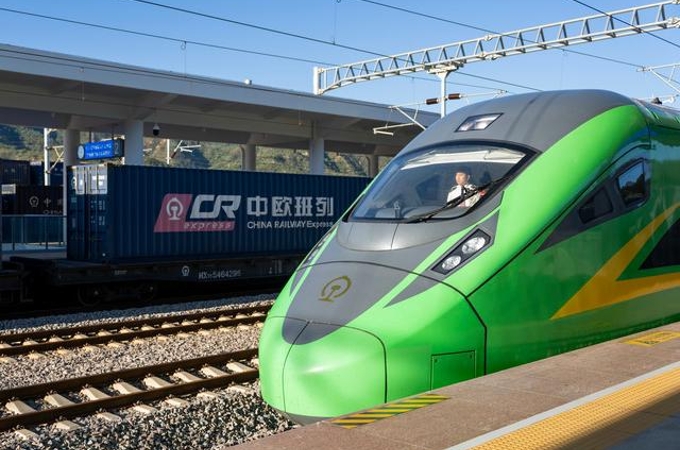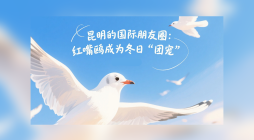
The Khmu (also spelled Khamu or Kemu), one of the largest ethnic groups in northern Laos, are also found in southwestern China's Yunnan Province.
In Yunnan, Khmu people once inhabited in jungles of Jinghong City and Menngla County in Xishuangbanna Dai Autonomous Prefecture, with a population of 3,291 (statistics in 2009). In the past, most of the Khmu suffered poverty, due to living in remote, inconvenient traffic and so on. Before 2009, most Khmu lived in thatched cottages and asbestos shingle-roofed houses. Some even lived in trees, feeding on corns, Chinese yams, taros and sweet potatoes. They were known as “savages”.
The Khmu in Yunnan has not been classified in ethnic groups for a long time. For years, they posed themselves as Dai ethnic, while both language and costumes are different. In 2009, Khmu were classified as Blang people. In fact, the culture of Khmu differs from Blang’s. Still, they call themselves “Khmu people” or “Blang Khmu people”.
At the beginning of 2008, President Hu Jintao and Premier Wen Jiabao said, “It is determined to improve living and producing conditions of Khmu.” In that year, the State Council sent a work group to check settlements of Khmu. Also, Yunnan made the related plans to alleviate poverty for Khmu people, covering lodgings, education, culture, health, traffic and water conservancy.
By now, poverty alleviation has been carried out for 4 years. Reporters of Kunming City Times (Dushishibao) entered villages of Khmu recently. Supported by the government and rubber industry, the living conditions of Khmu people have been improved: some live in western-style buildings, some go to college, some become pop stars. Former savages live better lives now.

March 23, Manxiangban (曼香班) Hamlet, Gasa (嘎洒) Town, Jinghong City
More than 10 km away from the seat of Jinghong City, there is a cement road. By the sides of the road, there are endless rubber trees. After driving for half an hour, white buildings are seen in green jungles. All of them are western-style buildings, at least in two layers. It is Manxiangban Hamlet, where live 124 Khmu people of 25 households.
According to experts, Khmu people are short and get married with cognate. In fact, their statures are as same as other ethnic groups around. In recent years, Khmu people also get married with Han, Dai and Hani people. Such as, Yan Hanxiang (岩罕香), 33 years, a leader of Manxiangban has married a Han woman from Yuxi City of Yunnan, already with a 3-year-old son.
In Yan’s new house, the sitting room is gorgeous, where places droplights, projecting apparatus, a stereo and a Karaoke system. Yang laughed and said, “KTV has been placed at home.” By the right of the sitting room, there is a swimming pool.
Yan said, at least, a villager of the hamlet spent 200,000 yuan on building a house. He spent about 700,000 yuan on building the new house. There are two Khmu villages not far away from Manxiangban. Villagers also have been building new houses in recent years.
“Our lives are almost as cities’. We can buy rice, meat and vegetables.” Yan said. Though Manxiangban’s villagers only plant rubber trees, they live a leisurely life, “work for half an year, rest for the other half”.
But the lack of water haunts Manxiangban. The villagers got water from a channel by the hamlet before. Due to the rubber tree’s planting, the water is gradually reducing. Sometimes it even runs dry.
According to Yan, in 2008, the government issued 70,000 to poverty-stricken households of Manxiangba, supporting them to build new houses. “Supported by the government and price hike of rubber, all villagers get money.” A road, which connecting Manxiangba and the outer, has been built. Water pipes are also fixed. Cultural construction is promoted.
The Khmu believe in Buddhism, as Dai people. Yan stayed in a temple as a monk, for six years. He studied Chinese at day time and Dai language at night time. Still, the race of Yan on the ID card is “Dai”. Recently, the Khmu has been reported by the government, to change it into “Blang”.
Yan said that he did know there were Khmu people living in Mengla before. One day, a student from Manxiangban went to Jinghong and heard another one from Mengla speaking Khmu language. They began to realize that the Khmu also lived in Mengla. The population of Khmu in Mengla was more than Mengla’s. After that, both got in touch with each other.
“The Khmu in Mengla is different from Jinghong’s and retain lots of traditional customs, such as, festivals and marriage. Their annual “harvest festival” in December, the biggest traditional fiesta, is called “Gemale Festival” in Khmu language. Mengla’s Khmu invite Jinghong’s to join in the festival every year. The head of villagers stay together and drink rice wine, showing solidarity.”

March 23, Huijie (回结) Hamlet, Pengzhenmanzhong (捧镇曼种) Village, Mengla County
Huijie Hamlet, where live more than 140 Khmu people, is one of the 12 Khmu’s habitats in Mengla County. In 2009, the local government allocated 10,000 yuan to each household for building new houses. Now, the villages do not live in thatched cottages and asbestos shingle-roofed houses any more.
“I have not imaged that living conditions will be improved.” Yu Bian(玉扁), a villager said. The annual income was at most 3,000 yuan by planting corns and sugarcanes. Now, rubber trees are planted. The income exceeds 100,000 yuan. “The government supports us a lot.” Yu said.
The “Gemale Festival” has been paused for a long time. In recent years, the Khmu of Mengla restarts it. During the festival, the Khmu dress in folk costumes, singing, dancing and blessing outer guests.
The Khmu has their own songs and dances, including “Daodao” (蹈蹈) Dance. During “Gemale Festival”, a dancer holds a half-meter bamboo in a hand to knock the other, making rhythmic sounds.
There is a pop star in Huijie Hamlet, Yan Kanzai (岩坎宰), born in 1982. He stays in Xishuangbanna Song and Dance Troupe, with two albums. Most of the album songs are in Khmu languages, including “Song of Welcome for Guests” and “Toasting Song”. The two songs are sung during the “Gemale Festival” annually.
Yan Kanzai said that he had already left the troupe because he was busy on rubber trees’ planting. “I will not give up music!” Yan tries to spread Khmu songs.
The Khmu of Mengla retains some folk customs. Usually, they wear costume of Dai people, only dress their own folk customs during the “Gemale Festival”. They have special ways for blessing, including “tying a line” and “tattooing” on others’ hands.
Khmu people of Yunnan have integrated into modern society, from primitive tribe.









